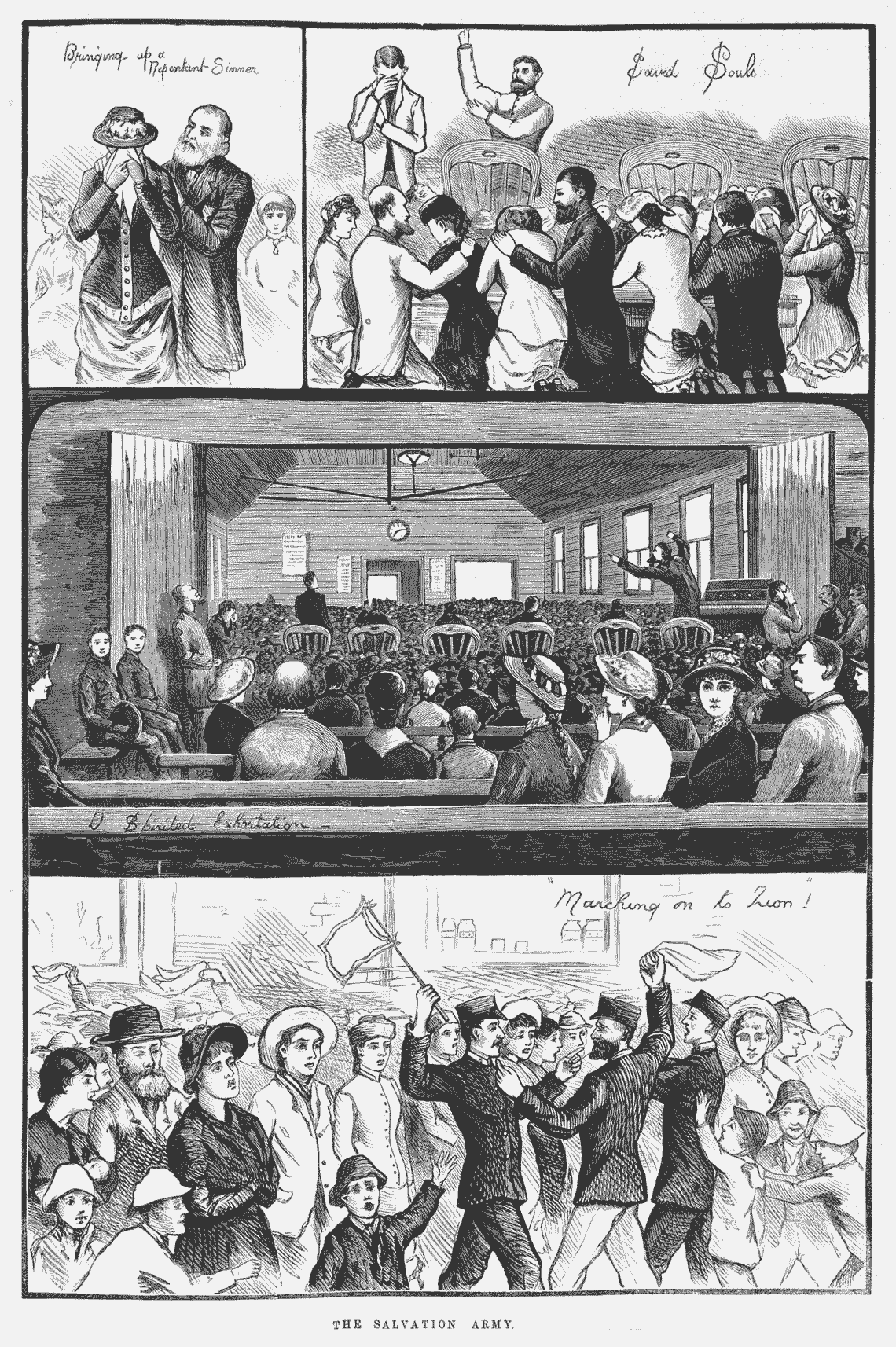
Scenes depicting the Salvation Army in action, 1883.
IMAGE COURTESY OF THE STATE LIBRARY VICTORIA, IAN21/02/83/25.
There have been over 100 mayors who have served the people of Ballarat. But before Jessie Margaret Scott was elected in 1976, all of them were men.1 It is not hard to sense a strong masculine presence in this building. Indeed, the historical record is dominated by men, like the ones you see in portraits hanging on the walls of the Town Hall. At least one of the imposing figures on these walls seems to have been just as intimidating in real life as he is here.
Charles Collett Shoppee, in a lone portrait on the northern wall, casts a watchful eye over this room. Arriving in Ballarat in 1855, Charles quickly established himself as a businessman, founding the ‘Crystal Palace’, a crockery warehouse. He joined the City Council and was mayor four times between 1890 and 1903.2 He was also a man of strong opinions, described in one newspaper as ‘a man of the ‘Bull Dog’ breed, whose tenacity was phenomenal’.3 Charles Shoppee demonstrated this spirit when he clashed with the Salvation Army. In October 1891, Mayor Shoppee declared that the Salvation Army had violated the law, causing a nuisance by marching in procession in the streets of Ballarat. The accused were fined, but two men and five women refused to pay. A warrant was issued for their arrest.4
Close to a thousand people followed the seven Salvationists as they were marched to gaol, singing loudly and showing their support for the accused. A number of councillors were in strong opposition to Mayor Shoppee’s stance and a heated discussion in the council chambers followed. It was agreed that the people of Ballarat themselves would decide whether or not the Salvation Army should be able to parade in the streets of Ballarat.5 The results of the vote were close, with 1,018 votes in favour of allowing the Salvation Army to march and 1,692 opposed. The Mayor had won. The Town Hall's Alfred Bells rang out in victory, but even this was too much for Mayor Shoppee, who it seemed disliked any public noise.6
There are plenty of stories like this one in the pages of the Town Hall’s history. Harder to find are the stories of the women who helped to build and shape the City of Ballarat. Women are often excluded from official historical records, and when they do appear, it is often through their relationship to other men – as daughters, wives and mothers. In the newspaper reports of the past, for example, mayors’ wives are often referred to as ‘the Lady Mayoress’ or by their husbands’ names. Although they are mentioned, their identities have been overshadowed.
REFERENCES
[1] ‘Mayors of Ballarat’, Ballarat & District Genealogical Society Inc, http://www.ballaratgenealogy.org.au/resources/mayors-of-ballarat, accessed 12 June 2018.
[2] ‘Mayors of Ballarat’, Ballarat & District Genealogical Society Inc, http://www.ballaratgenealogy.org.au/resources/mayors-of-ballarat, accessed 12 June 2018.
[3] The Horsham Times, 3 May 1912, p. 6.
[4] The Age, 13 October 1891, p. 6.
[5] The Age, 13 October 1891, p. 6.
[6] The Gippsland Farmers’ Journal and Traralgon, Heyfield and Rosedale News, 3 November 1891, p. 3.